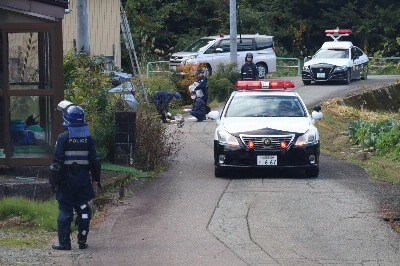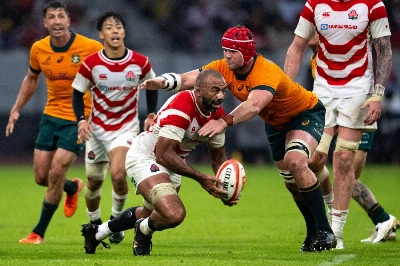One of sumo's most distinctive sights is its ringside judges.
Clad in black, the five men are all sumo elders as well as former wrestlers.
They are the ultimate authority when it comes to wins and losses.
If one disagrees with the referee's decision he will raise his hand then mount the dohyo and have a conference with the other judges in the middle of the ring.
The head judge then announces their decision to the crowd via the public address system.
Look closely, though, and you will see that he is wearing an earpiece.
That's connected to another judge on the second floor who has access to instant replay. If the men in the ring can't come to a quick decision they will ask the judge in the booth what he can see.
Many people, upon hearing that sumo has an instant replay system, assume it's just a tacked-on sop to modern audiences.
The reality, however, is that sumo was using instant replay decades before its more famous counterparts in American football and rugby.
The NFL brought first experimented with instant replay in 1986 but ditched it for most of the 1990s.
Rugby union meanwhile only introduced what became known as the "Television Match Official" system in the early 2000s.
Sumo, by contrast, has been using instant replay since the late 1960s.
It was introduced in May 1969, after a public outcry over the ringside judges reversing the referee's decision and awarding Toda a win over legendary yokozuna Taiho in the previous tournament.
Television replays showed they indeed got it wrong, but what was most galling was the fact that Taiho came into the bout on a string of 45 straight wins and many felt he could have made a run at Futabayama's fabled 69 consecutive victories.

















With your current subscription plan you can comment on stories. However, before writing your first comment, please create a display name in the Profile section of your subscriber account page.